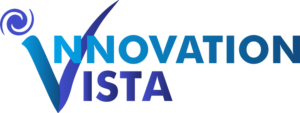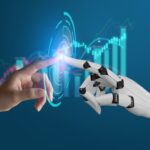In a world brimming with transformative technological advancements, Stephen Haag’s “2022: The Fourth Industrial Revolution” stands out as an illuminating guide to the seismic shifts defining our era. Haag’s treatise on the burgeoning revolution is both an exposition of emerging technologies and a clarion call for readers to embrace, understand, and shape the dawning future.
Haag’s premise is audacious yet grounded: the next two decades will be the zenith of innovation. This is not just another tech-evangelist’s idealistic perspective but a meticulously detailed journey through the cutting-edge technologies that form the bedrock of the Fourth Industrial Revolution. From the expansive world of the Internet of All Things (IoT) and the game-changing capabilities of Artificial Intelligence to the frontier technologies like Quantum Computing and Nanotechnology, the book presents an in-depth understanding of each technological marvel.
One of the book’s triumphs is how Haag doesn’t just list technologies; he paints a vivid picture of an interconnected digital ecosystem. Concepts like decentralized finance (DeFi), digital twins, and the Web 3.0 are unraveled, not just as standalone novelties but as critical components of a holistic technological transformation. The inclusions of more niche terms like eVTOL and Lidar testify to Haag’s commitment to thoroughness and depth.
Yet, Haag’s work is not a mere technical manual. It extends beyond the ‘what’ and ‘how’ of these technologies, delving into the ‘why’. What makes this piece particularly resonant is its underlying narrative on the human side of this revolution. As technologies like Extended Reality and Sensing Technologies become ubiquitous, readers are prompted to consider their implications on daily life, career choices, and even personal dreams.
Furthermore, the book’s emphasis on innovation, rather than mere invention, is both refreshing and crucial. Haag posits that the foundational technologies for the Fourth Industrial Revolution have already been established. Now, the onus is on us, the global populace, to chart the course of innovation, molding these technologies to create a better, more equitable future.
Perhaps the most impactful element of “2022: The Fourth Industrial Revolution” is its call to action. Haag is not just an author but positions himself as a tour guide, inviting readers to join him on a journey of exploration and discovery. By the book’s end, you’re not just familiarized with terms like bioprinting or NFTs; you’re inspired to develop a personal lens to harness these technologies. Haag’s sentiment that “the best way to predict the future is to invent it” reverberates long after the final page, pushing readers to be proactive agents of change in this unparalleled era of innovation.
In conclusion, “2022: The Fourth Industrial Revolution” is more than just a book; it’s a timely manifesto for the future. Stephen Haag has crafted an enlightening, comprehensive, and invigorating guide that is indispensable for anyone seeking to navigate, understand, and influence the rapidly evolving world of the 21st century.




